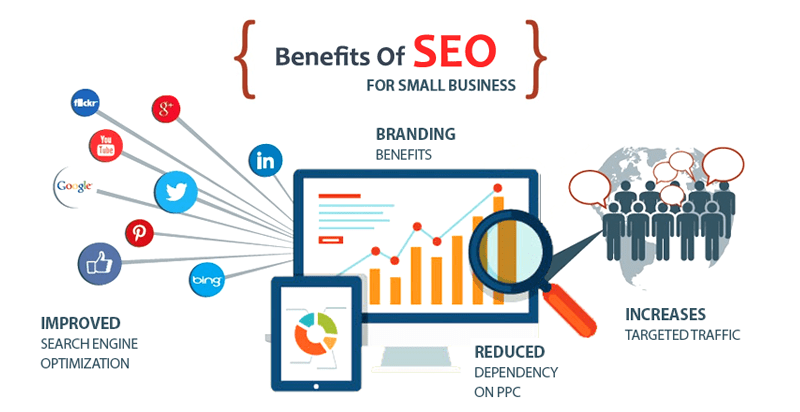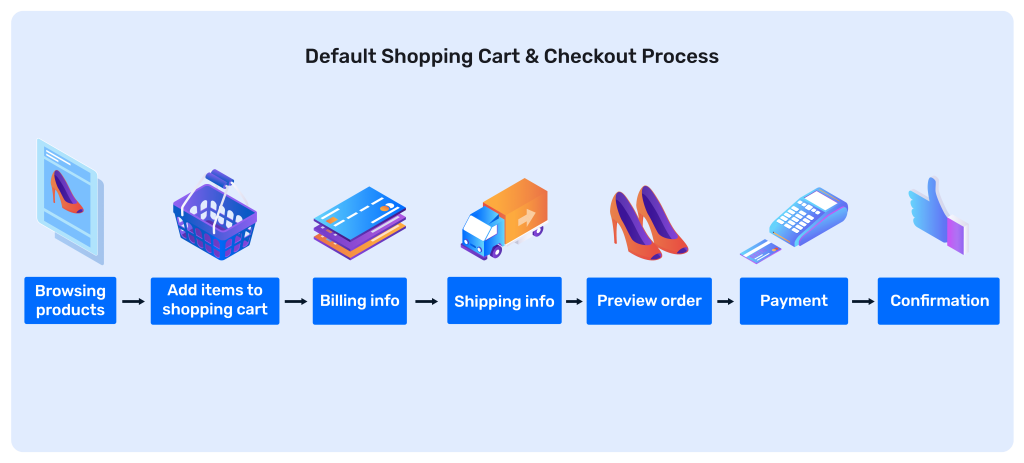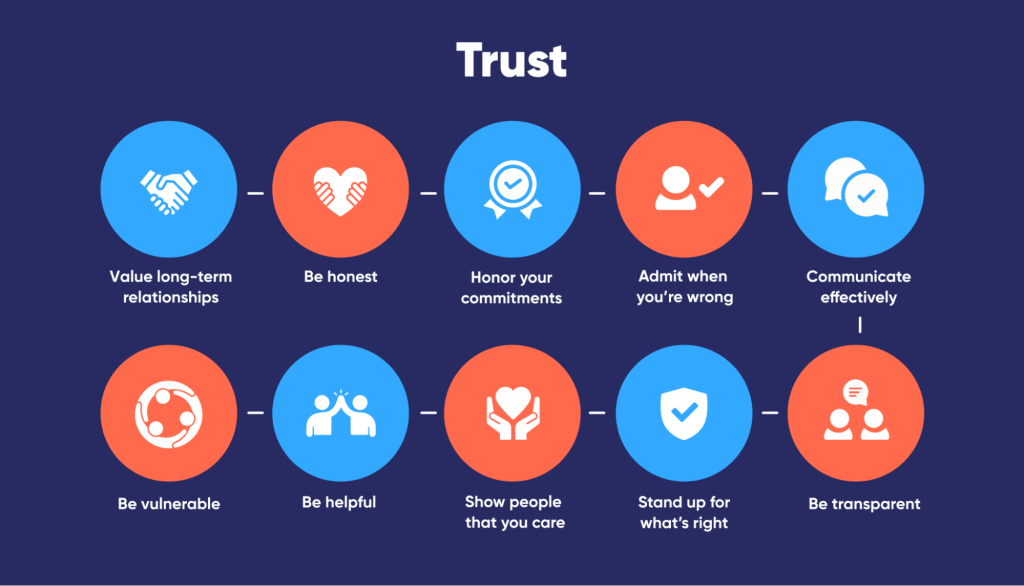How to Build a Successful E-commerce Website
I. Choose the Right Platform
Overview of popular e-commerce Platforms

Many popular e-commerce platforms are available, each with its own strengths and weaknesses. Here is an overview of some of the most popular e-commerce platforms:
- Shopify: Shopify is one of the most popular e-commerce platforms, with over 1 million businesses using its services. It is known for its user-friendly interface, extensive app store, and powerful features.
- WooCommerce: WooCommerce is a free e-commerce plugin for WordPress, making it an ideal choice for businesses already using WordPress as their CMS. It offers a lot of flexibility in terms of design and functionality but may require some technical knowledge to set up.
- Magento: Magento is a popular e-commerce platform for larger businesses or those with complex needs. It offers extensive customization options and a wide range of features but can be more challenging to set up and maintain than other platforms.
- BigCommerce: BigCommerce is a fully hosted e-commerce platform offering various features and customization options. It is known for its scalability and security, making it a popular choice for larger businesses.
- Wix: Wix is a popular website builder that also offers e-commerce functionality. It offers a range of templates and customization options, making it a good choice for small businesses just starting out with e-commerce.
These are just a few examples of popular e-commerce platforms available. Each platform has its own unique features and benefits, so it’s important to choose one that best fits your business’s needs.
Criteria for choosing the right platform

Choosing the right e-commerce platform is a critical decision for any business. Here are some criteria to consider when selecting an e-commerce platform:
- Cost: Consider the upfront and ongoing costs of the platform, including transaction fees, hosting fees, and app or plugin costs.
- Ease of use: Look for a platform that is easy to set up and use, with an intuitive interface and straightforward administration tools.
- Customization: Consider the level of customization available with the platform, including design options, integrations with other tools or software, and the ability to add or remove features as needed.
- Scalability: Think about the potential growth of your business and ensure that the platform can scale to accommodate increased traffic, sales, and inventory.
- Security: Ensure the platform offers robust security measures to protect sensitive customer and business data.
- SEO-friendliness: Look for a platform optimized for search engines, with built-in SEO tools and features that can help improve your site’s visibility and ranking in search results.
- Customer support: Consider the level of customer support the platform provides, including the availability of resources, tutorials, and technical support.
By considering these criteria, you can narrow down your options and choose the e-commerce platform that best meets the needs of your business.
II. Design for Your Customers
Importance of website design in e-commerce

Website design is critical for e-commerce success because it directly impacts user experience, conversion rates, and brand perception. Here are a few reasons why website design is important for e-commerce:
- First impressions matter: A well-designed website can make a positive first impression and establish credibility with potential customers. Conversely, a poorly designed website can turn visitors away and hurt your brand reputation.
- User experience impacts sales: An intuitive, user-friendly website design can make it easier for visitors to find what they want, browse products, and purchase. A confusing or cluttered website, on the other hand, can lead to frustration and abandoned shopping carts.
- Brand perception: A website’s design can reflect a brand’s values, personality, and unique selling points. A cohesive, visually appealing design can help build brand recognition and establish customer trust.
- Mobile responsiveness: With the rise of mobile e-commerce, your website must be optimized for mobile devices. A responsive design that adapts to different screen sizes can improve user experience and drive more sales.
- Competitive advantage: A well-designed website can differentiate your brand from competitors and help you stand out in a crowded e-commerce landscape.
In summary, website design is crucial to e-commerce success by impacting user experience, conversion rates, brand perception, and competitive advantage.
Tips for optimizing e-commerce website design

Optimizing e-commerce website design involves making strategic choices that improve the user experience and drive sales. Here are some tips for optimizing your e-commerce website design:
- Prioritize speed: Slow load times can frustrate users and drive them away. Optimize your website for speed by minimizing file sizes, reducing HTTP requests, and using a content delivery network (CDN).
- Use high-quality images: High-quality product images can greatly impact user experience and sales. Use large, clear images that show your products from multiple angles and in different contexts.
- Simplify navigation: Make it easy for users to find what they’re looking for by simplifying your navigation. Use clear, descriptive labels and organize your products into logical categories.
- Use color strategically: Color can impact user behavior and emotions. Use color to draw attention to key elements, create contrast, and establish your brand’s personality.
- Optimize your checkout process: Streamline your checkout process by removing unnecessary steps and minimizing form fields. Make it easy for users to edit their cart and view their order summary.
- Use social proof: Social proof can help establish user trust and drive sales. Use customer reviews, testimonials, and trust badges to show that your products are popular and trustworthy.
- Make it mobile-friendly: More and more users are shopping on mobile devices. Optimize your website for mobile by using responsive design, large buttons and fonts, and simplified navigation.
Following these tips can optimize your e-commerce website design for improved user experience and increased sales.
III. Optimize for Search Engines
Importance of SEO in e-commerce

SEO (Search Engine Optimization) is essential for e-commerce businesses because it helps improve the visibility and ranking of your website in search engine results pages (SERPs). Here are some reasons why SEO is important for e-commerce:
- Increased organic traffic: By optimizing your website for search engines, you can drive more organic traffic to your website. This can lead to more sales and revenue for your business.
- Improved user experience: SEO involves making strategic changes to your website that can also improve the user experience. This includes optimizing your website’s loading speed, navigation, and content.
- Cost-effective: Unlike paid advertising, SEO is a cost-effective way to improve your website’s visibility and drive traffic. While it may take time and effort to see results, the long-term benefits can be significant.
- Builds credibility and trust: When your website appears at the top of search engine results pages, it can help build credibility and trust with potential customers. This can lead to higher conversion rates and increased customer loyalty.
- Keeps you competitive: E-commerce is a highly competitive industry, and SEO can give you an edge over your competitors. By optimizing your website for search engines, you can stay ahead of the competition and attract more customers.
In summary, SEO is essential for e-commerce businesses because it can drive more traffic, improve the user experience, build credibility and trust, and keep you competitive in a crowded marketplace.
Best practices for e-commerce SEO

Here are some best practices for e-commerce SEO that can help improve your website’s visibility and ranking in search engine results pages (SERPs):
- Keyword research: Identify relevant keywords and phrases that your potential customers might use to search for your products. Use these keywords in your website’s content, titles, and metadata.
- Optimize your product pages: Each product page should have a unique title and description that includes relevant keywords. Use high-quality images and videos, and include customer reviews and ratings.
- Use structured data: Structured data helps search engines understand the content of your website and can improve your visibility in search results. Use schema markup to identify products, reviews, and other important information on your website.
- Build quality backlinks: Backlinks from other reputable websites can improve your website’s authority and visibility in search results. Focus on building quality backlinks from relevant websites.
- Optimize your site architecture: A well-organized site architecture can make it easier for search engines to crawl and index your website. Use clear, descriptive URLs, and organize your content into logical categories.
- Use social media: Social media can help drive traffic and build backlinks to your website. Share your content on social media, and encourage others to link to your website.
- Monitor your analytics: Use analytics tools to track your website’s traffic, rankings, and conversion rates. Use this data to identify areas for improvement and optimize your SEO strategy.
By following these best practices for e-commerce SEO, you can improve your website’s visibility and ranking in search engine results pages (SERPs), drive more traffic to your website, and increase sales and revenue.
IV. Create a Seamless Checkout Experience
Critical elements of a successful checkout process

The checkout process is a critical element of any e-commerce website. Here are some of the most important elements of a successful checkout process:
- Easy-to-use interface: The checkout process should be easy to navigate, with clear instructions and user-friendly design. The interface should be simple and intuitive, so that users can complete their purchase quickly and easily.
- Multiple payment options: Offer multiple payment options to customers, such as credit cards, PayPal, and other online payment methods. This will help to accommodate different customer preferences and increase the likelihood of a successful transaction.
- Guest checkout: Many customers prefer to checkout as guests, rather than creating an account. Make sure to offer this option to avoid losing potential customers who may not want to create an account.
- Security: Customers need to feel confident that their personal and financial information is safe. Use SSL encryption and other security measures to protect customer data during the checkout process.
- Shipping options: Offer clear shipping options, including delivery times and costs. This information should be easy to find and understand, and should include tracking information if possible.
- Order review: Before completing the purchase, customers should have the opportunity to review their order, including the products they have selected, the shipping address, and the payment information.
- Confirmation and follow-up: After the purchase is complete, send a confirmation email to the customer with details of their order, including the products, shipping address, and estimated delivery time. Consider following up with customers after the purchase to ask for feedback and encourage repeat business.
By focusing on these critical elements of the checkout process, e-commerce businesses can improve the user experience, increase customer satisfaction, and drive more sales.
Strategies for streamlining the checkout process

Streamlining the checkout process can help to reduce cart abandonment rates and increase conversions. Here are some strategies for streamlining the checkout process:
- Minimize the steps: The checkout process should be as simple and streamlined as possible. Minimize the number of steps required to complete the purchase, and remove any unnecessary fields or questions.
- Use pre-filled forms: Pre-fill forms with customer information whenever possible, such as the shipping and billing address. This will save customers time and reduce the likelihood of errors.
- Offer one-click checkout: Consider offering one-click checkout options, such as Amazon Pay or Google Pay. This can simplify the checkout process for customers who have already saved their payment and shipping information with these services.
- Provide clear progress indicators: Use progress indicators to help customers understand where they are in the checkout process and how many steps are left. This will help to reduce frustration and increase completion rates.
- Optimize for mobile: Make sure the checkout process is optimized for mobile devices, with a responsive design and mobile-friendly forms. Many customers use their mobile devices to shop online, and a difficult checkout process can lead to cart abandonment.
- Use cart abandonment recovery tools: If a customer abandons their cart, consider using cart abandonment recovery tools, such as abandoned cart emails or retargeting ads, to encourage them to complete the purchase.
By implementing these strategies for streamlining the checkout process, e-commerce businesses can improve the user experience, reduce cart abandonment rates, and increase conversions.
V. Build Trust with Customers
Importance of trust in e-commerce

rust is a critical element of any successful e-commerce business. Here are some reasons why trust is so important in e-commerce:
- Security: Customers need to feel confident that their personal and financial information is safe when they shop online. E-commerce businesses that prioritize security measures, such as SSL encryption and two-factor authentication, can build trust with their customers.
- Brand reputation: A strong brand reputation can help to build trust with customers. E-commerce businesses that consistently deliver high-quality products and excellent customer service can establish a positive reputation that will encourage customers to return.
- Social proof: Social proof, such as customer reviews and ratings, can help to build trust with potential customers. E-commerce businesses should encourage customers to leave reviews and display them prominently on their website.
- Clear policies: E-commerce businesses should have clear policies for shipping, returns, and customer service. These policies should be easy to find and understand, and should be communicated clearly to customers.
- Transparent pricing: Customers appreciate transparent pricing, with no hidden fees or charges. E-commerce businesses should clearly display their prices, including any taxes or shipping costs, to build trust with customers.
By prioritizing trust in their e-commerce business, companies can build stronger relationships with their customers, increase customer loyalty, and ultimately drive more sales.
Strategies for building trust with customers

Building trust with customers is essential for the success of any e-commerce business. Here are some strategies for building trust with customers:
- Security measures: Implement robust security measures to protect customer data. This includes SSL encryption, two-factor authentication, and secure payment processing.
- Clear policies: Develop clear policies for shipping, returns, and customer service. Display these policies prominently on your website and make sure they are easy to find and understand.
- Social proof: Encourage customers to leave reviews and ratings on your website and other platforms, such as Google and Yelp. Display these reviews and ratings prominently to build social proof and increase trust.
- Professional design: Use professional design and high-quality images to create a professional and trustworthy brand image.
- Transparent pricing: Be transparent about your pricing, including taxes and shipping costs. Avoid hidden fees or charges that may erode customer trust.
- Excellent customer service: Provide excellent customer service by responding quickly to inquiries and resolving issues promptly and professionally.
- Build relationships: Build relationships with customers by communicating regularly via email and social media. Provide value through content and special offers, and listen to customer feedback to continuously improve your offerings.
By implementing these strategies, e-commerce businesses can build trust with their customers, increase customer loyalty, and ultimately drive more sales.
Certified Laravel Developer
Certified Laravel Developer